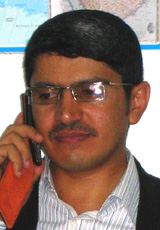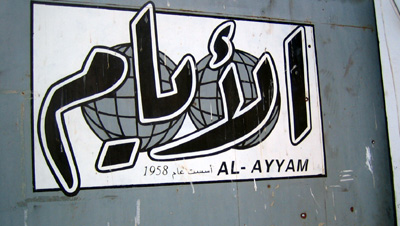One opinion was relayed to me repeatedly by numerous journalists, lawyers, and human rights defenders during the week I just spent in Yemen: The crackdown against independent and opposition media in the country has not been this concerted at any time since the unification of the southern and northern halves of the country in 1990.
In a steady decline since May 2009, when the government forcibly shut down at least eight newspapers, Yemen’s press freedom landscape has continued to shrink. CPJ concluded that a visit to the country was urgently needed in order to closely examine the tactics employed by the government to hamstring independent and opposition media.
I was in Yemen to report in particular on the government’s specialized press court, proposed amendments to the press law and the penal code, and a new bill in parliament designed to control online, television, and radio journalism. It quickly became clear that the oft-repeated observation that the margin for free expression is as narrow as it has been since the early 1990s is an accurate one. During my week in Yemen, a journalist was abducted by government operatives–an all too common occurrence in Yemen–and authorities continued their no-holds-barred persecution of Al-Ayyam, formerly the country’s highest circulation independent daily.
Since it was prevented from going to print in early May 2009, the Aden-based daily Al-Ayyam has been the premier target in the government’s assault on free expression. During the past 14 months, Al-Ayyam has been paralyzed: Its editor-in-chief, Hisham Bashraheel, and his two sons, Hani and Mohammad, managing editor and manager respectively, were imprisoned for months; its headquarters and distribution center were besieged for days on end and fired upon with automatic fire and rocket-propelled grenades; and the newspaper and staff were brought to trial in multiple politicized trials. Additionally, Hisham Bashraheel was prevented from traveling to seek urgent medical care. The travel ban was lifted only after pressure from local and international groups. Meeting with Al-Ayyam, I observed a severely damaged building and vehicles.

Equally disturbing was the abduction of Abdulelah Hider Shaea, a Yemeni journalist known for his exclusive interviews with Al-Qaeda leaders in the Arabian Peninsula and frequent commentator on Islamist groups. Shaea said that his identity as a journalist made him a target. “In Yemen, you conceal your identity as a journalist. Your journalism ID is a liability, not an asset. It turns you into a target,” Shaea ominously told me just days before his abduction.
I met with Shaea again just hours after he was released. He recounted the abusive treatment he received during the five hours during which he was abducted. He said he was forced to disembark from a taxi in the middle of the capital by eight men wielding machine guns and was blindfolded and led to a basement in an unknown location. There he was made to put on a prison uniform and was roughly interrogated about his work. He was forced to endorse a document he was not allowed to read by applying his thumb prints to it. He told me and multiple news outlets that the “operation was designed to frighten and silence me, but that I will not be dissuaded from doing my work as a journalist.” Shaea said he was not able to identify the specific agency that had forcibly taken him, but that the abductors referred to themselves as “security.” Multiple journalists, including Shaea, suspect that he was detained by either the political or national security apparatus.
Shaea can consider himself lucky; he was released after just one night of interrogation. In recent months, multiple journalists were disappeared, only to appear in government custody months later.
